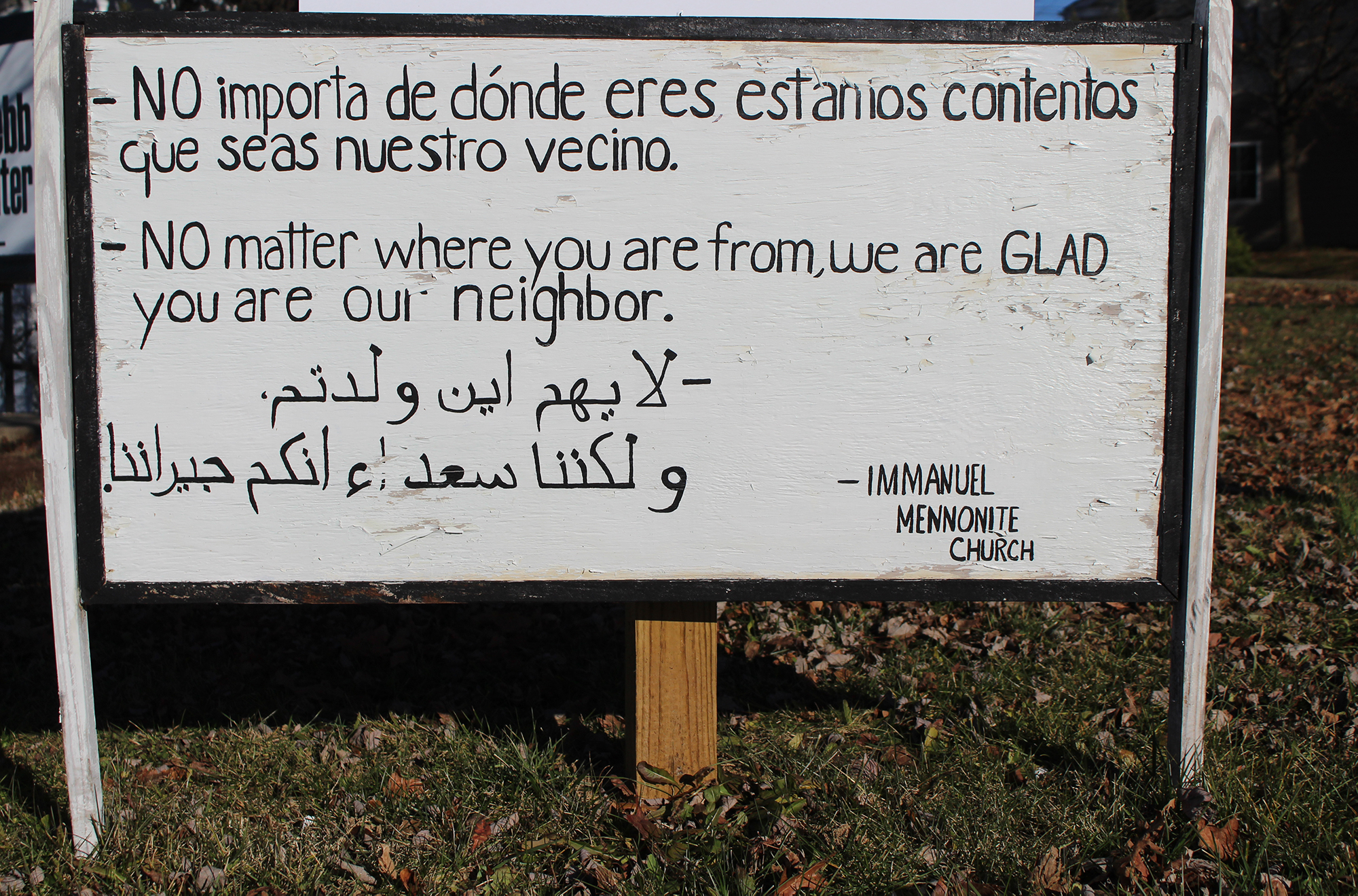As Matthew Bucher watched the Republican primaries of the 2016 presidential election unfold, he felt restless.
The candidates didn’t appear to agree on much, but one apparent consensus among them stood out to Bucher: African-Americans and immigrants were a problem to society. As the pastor of Immanuel Mennonite Church in the diverse community of Harrisonburg, Virginia, Bucher decided someone needed to step up and promote Jesus’ teachings on loving our neighbors — regardless of race or ethnic background.
Given the large Hispanic and Arab population in the neighborhood, as well as the church, Bucher devised the idea to create a sign that read, “No matter who you are, we’re glad you’re our neighbor” in English, Spanish and Arabic. The sign reflects one of Jesus’ primary teachings —love God and love your neighbor — as well as something Paul the Apostle said in Galatians 3:28: “There is neither Jew nor Gentile, neither slave nor free, nor is there male and female, for you are all one in Christ.” Bucher then brought the idea to his fellow church members, who supported it and encouraged him to place it on the front lawn.
Bucher enlisted the services of Melissa Howard, a local artist and member at Immanuel, to create the sign. For her usual price of $20, she a painted a board white with the text in all three languages.
However, when Bucher told other local Mennonite pastors Nick Meyer, Jennifer Davis Sensenig and Ben Risser about the sign, they suggested converting it into a yard sign so that others could spread the message.
